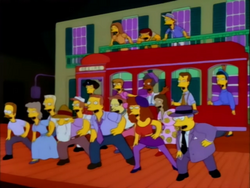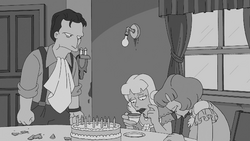
Difference between revisions of "A Streetcar Named Desire"
Wikisimpsons - The Simpsons Wiki
m (→References in video games: replaced: Virtual Springfield → The Simpsons: Virtual Springfield) |
|||
| Line 34: | Line 34: | ||
== References in video games == | == References in video games == | ||
{{Expand}} | {{Expand}} | ||
| − | The play is referenced in the video games ''[[Virtual Springfield]]'', ''[[Road Rage]]'' and ''[[Hit & Run]]''. | + | The play is referenced in the video games ''[[The Simpsons: Virtual Springfield]]'', ''[[Road Rage]]'' and ''[[Hit & Run]]''. |
== External links == | == External links == | ||
Revision as of 08:26, September 5, 2020
A Streetcar Named Desire is a 1947 play by Tennessee Williams, which was adapted into a 1951 film by Elia Kazan, starring Marlon Brando, Karl Malden and Vivien Leigh. It has been referenced a few times in "The Simpsons".
References to A Streetcar Named Desire in The Simpsons
|
References in video games

|
This article or section needs expanding.
|
The play is referenced in the video games The Simpsons: Virtual Springfield, Road Rage and Hit & Run.
External links


